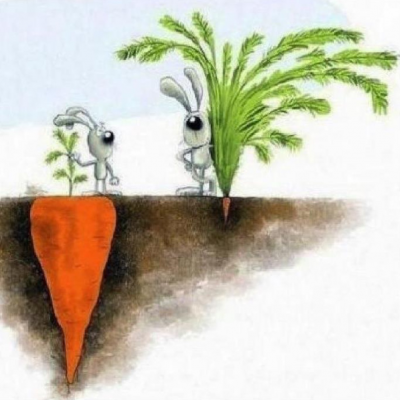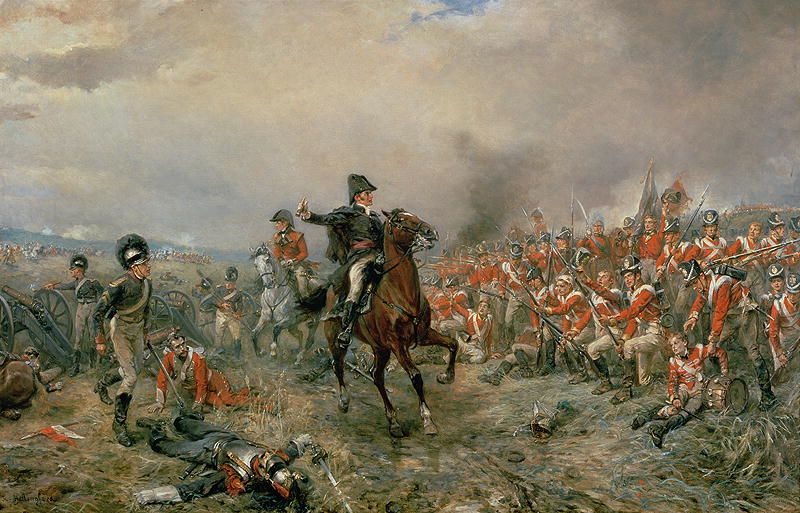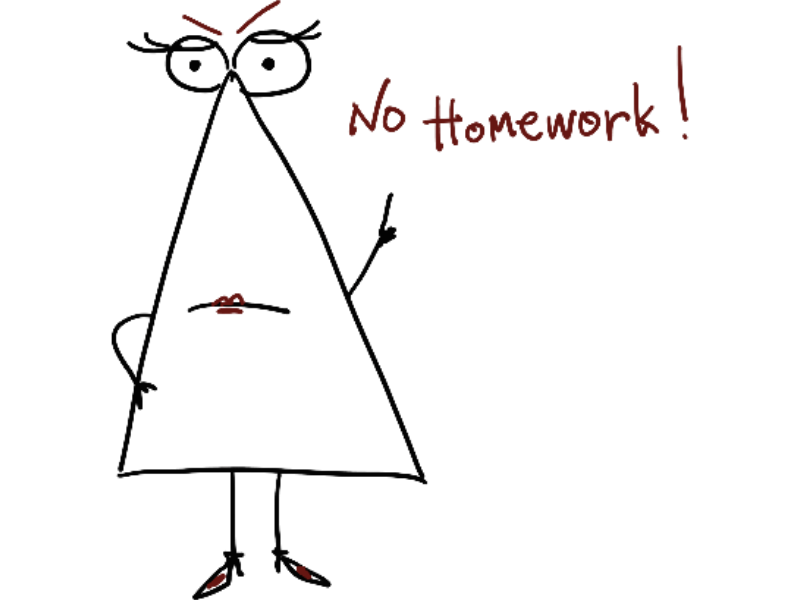Task 1:
Describe the picture. Answer the following questions in your description:
- What do you see in the picture below?
- What might this picture illustrate?
- What does the picture make you think of?
Write your answer in
100–120 words.
Additional tasks:
Task 2 (essay topics)
Imagine that the picture from task 1 is given to you as a visual prompt for an essay. Think of and write down 3 essay topics relevant to the picture.
Task 3 (finding mistakes)
Read the description below, which answers task 1. What are its weak points?
The picture shows a strange thing. This thing is white. It has three shadows. The shadows
are on three walls: red, blue and yellow. The shadows are different, because the shape of
the thing is strange.
The picture shows that if we look at something we see only one side, and if we look at
another side, we see something else. It means that if we want to know what this something
really looks like, we must look at it from different sides.
This picture makes me think that when we see or experience something, we should
understand that we don't know what it really is and we must remember that it can be
different from what we see.
Task 4 (improving your description)
Look again at the description you wrote for task 1. Does it have any weak points like the
one in task 3? If it does, improve your description. The vocabulary below might be of help:
- look at the problem from every aspect
- angle of vision
- scratch the surface of something
- peculiar
- bizarre
- ray of light
- spotlight
- cast a shadow
- resemble
- represent
- reflect
- create / give an impression
- make an accurate / balanced judgement
- draw a false conclusion
Vocabulary exercises related to the topic:
Скачать это задание (PDF).
Task 1:
Describe the picture. Answer the following questions in your description:
- What do you see in the picture below?
- What might this picture illustrate?
- What does the picture make you think of?
Write your answer in
100–120 words.
Task 2 (essay topics)
Imagine that the picture from task 1 is given to you as a visual prompt for an essay. Think of and write down 3 essay topics relevant to the picture.
Task 3 (caption)
Write a caption for the picture. Use no more than 8 words.
Скачать это задание (PDF).
The picture below is “Wellington at Waterloo” by Robert Alexander Hillingford. Describe the picture. Your writing must contain:
- a detailed description of the people and objects you see;
- a brief description of the battle (date, location, participants, result).
Use and underline the following words in your writing: infantry, canon, equipped, invade, emperor. You can change the given words to make them grammatically suitable.
Write your answer in 120–150 words.
Скачать это задание (PDF).
Task A: Advertisement
Choose one of the products from the pictures below and write an advertisement describing this product. In your advertisement:
- mention at least 3 special features of the product;
- make the product look attractive for the potential customer.
Make sure that your description matches the picture you have chosen.
Write 100–120 words.
Product 2: Electric Toothbrush
Product 3: Wireless Headphones
Task B: Letter of Complaint
Now imagine that you are a customer who read the advertisement written in Task A. You got interested in the product and bought it. However, the purchase was disappointing. Write a letter of complaint to the manager of the company. In your letter:
- complain about the quality of the product, comparing its real qualities with those listed in the advertisement;
- ask for a solution that will suit you.
Write 150–180 words.
Скачать это задание (PDF).
Task A:
Imagine that you are a teacher at school. One of your students didn't hand in his homework claiming that his pet dog had eaten it. Write a note to your students' parents.
In your note:
- briefly explain the situation;
- express your doubts about the student's honesty;
- insist on the student bringing his homework within the next week.
Write about 50–60 words.
Task B:
Imagine that you are a parent of the student from task A. You really have a pet dog, and it did eat the notebook with the student's homework. Write a note to the teacher.
In your note:
- explain that the student wasn't lying;
- assure the teacher that the student will bring the rewritten homework.
Write about 50–60 words.
Образец ответа
Task A
Dear Mr. and Mrs. Black,
I am writing to inform you that your son has not brought his homework today and claimed that his
dog had eaten it — an excuse that I do not find plausible. Please make sure that the homework is handed in within the next week, since it is essential for the course.
Best regards,
Mrs. Honey
Task B
Dear Mrs. Honey,
Please accept our sincere apologies about the missing homework. We do happen to have a dog
that tends to be jealous when our son spends too much time at his desk. Eating the homework was
the dog's revenge. Although our child is not to blame in this situation, he will rewrite the homework
and hand it in as you request.
Best wishes,
Mr. Black
Скачать это задание (PDF).
Imagine that you are a thief who has just robbed someone's flat. Leave a note to the owners of the flat. Include a list of the stolen items in your note.
Spend no more than 5 minutes on writing, otherwise you won't have enough time to make off before the police arrive.
Write about 50-60 words.
Task B:
Imagine that your fellow robber from task A got into prison. You have a plan of escape. Share it with the prisoner by writing him a note.
In the note:
- let your friend know that you have a plan;
- tell him what he has to do to escape and how you will assist him.
Write no more than 80 words, or a security guard might notice it.
Click here if you have never escaped from prison and need ideas
Friends don't let friends rot in prison.
- Three convicted murderers escaped from an Arizona state prison in August 2010 by using wire cutters thrown over the prison fence by a woman outside.
- When David Puckett drove his stolen pickup to Houston after escaping from a Texas prison, he had money wired to him by a woman he'd met online while in prison.
- But the Best Friend Award probably goes to Pascal Payet. The French criminal first escaped from prison in 2001 in a helicopter hijacked by a group of friends.
Not all escapes require a helicopter. But a little technology helps.
Source of the text
Скачать это задание (PDF).
Last night your neighbour was listening to very loud music. You weren't sleeping and enjoyed the music pretty much. In the morning you decided to call on your neighbour to find out the name of the band, but he didn't open the door (being sound asleep, probably). Write a note to your neighbour to satisfy your curiosity.
In your note:
- express your positive feelings about the music;
- mention being a fan of that type of music;
- ask the name of the band;
- give your contact details.
Write about 50–60 words.
Скачать это задание (PDF).
Part 4 (20 minutes)
Writing
Imagine that your English teacher asked you to write a note for your classmates about a Sunday excursion to a Space museum where you need to collect some material for your class project.
Remember to include:
- greeting;
- time and place of meeting;
- things they have to take ( a pen, a camera, etc.);
- time their parents need to pick them up at school;
- finish your note with an invitation to take part in this event.
Write no more than 70–80 words.
Скачать это задание (PDF).
Part 4 (20 minutes)
Writing
Imagine you are in a holiday camp and your mobile phone doesn't work. Leave a note to your roommate Ann/Nick:
Say:
- you can’t go to the cinema with him/her;
- where you are going instead;
- when you can see each other;
- where you will meet;
- what you will do together when you meet.
Write about 50–60 words.
Скачать это задание (PDF).
WRITING
Time: 40 minutes
(15 scores)
Write a short review of your favourite play by William Shakespeare for your school magazine.
Write the title of the play at the beginning on a separate line (words are not counted in this line).
Remember to mention in your review:
- why you like the play;
- which character in the play you would most like to meet and why;
- why you should stage the play at your school theatre.
Write 100–140 words.
Скачать это задание (PDF).
Part 4 (30 minutes)
Writing
You've bought a new gadget recently. Write a review to a website called www.gadget.com. In you review remember to mention:
- what and why you've bought;
- how it looks;
- if it meets your requirements;
- if you have any complaints;
- if you would recommend it to other people.
Write about 120–150words.
Скачать это задание (PDF).
Part 4 (25 minutes).
WRITING
Your English teacher has asked you to write a story. The story must begin with this
sentence:
Just as the film began, I received a text message on my mobile phone.
Don't forget to mention in your story:
- who you were with;
- what kind of film it was;
- who sent you the message;
- what had happened;
- what you did.
Write about 120–150 words.
Скачать это задание (PDF).
Part 4
Writing
Write a story. Your story must begin with this sentence:
“I woke up knowing it was the most important day of my life.”
Write between 100-150 words.
Writing time – 30 minutes.
Скачать это задание (PDF).
Read the following articles and think of a proper title for each of them.
Article 1
Many forms of music were forbidden in the Soviet Union, especially in the first years of the Cold War. Western jazz and rock-and-roll were deemed the music of the enemy; Russian-émigré pop, the music of traitors. The Soviets banned “any music with a sort of swing to it,” says Stephen Coates, a British musician who founded the X-Ray Audio Project to chronicle one effort to evade state control.
In 1946 two enterprising music lovers in Leningrad, Ruslan Bugaslovski and Boris Taigin, figured out a way to copy records. The original music was smuggled into the country, often by sailors. Because materials in the U.S.S.R. were scarce, the two men scavenged parts from tools, such as drills, and old gramophones to build a recording machine. For the records themselves, they turned to an unlikely source: discarded x-rays, which were made of plastic soft enough to be cut by the recording machine.
The pair’s creations were striking: An x-ray image of broken ribs emitted the lilt of Russian tango. A Broadway show tune quavered from a dislocated pelvis. A human skull was the morbid backdrop for American jazz. “You have these pictures of the insides of Soviet citizens, impressed with the music they secretly loved,” says Coates, who stumbled across one of these “bone records” a few years ago in St. Petersburg.
Bootleggers in other cities picked up the duo’s methods, creating an underground record culture that lasted nearly two decades. But the authorities caught on too: Bugaslovski was imprisoned three times. “That’s how much music can matter,” says Coates.
Article 2
To appreciate a painting, we’re taught to look for color, composition, and light. But how can a painting be savored by someone who’s blind? Through touch, the one thing gallery placards tell you not to do. John Olson, a former photographer, and his team render paintings into fully textured 3-D models.
The tactile paintings work as a way to reveal art to the blind because we don’t see with just our eyes: We see with our brains. Research in the field of neuroplasticity—the brain’s adaptability—shows that the visual cortex is stimulated by touch. Blind people perceive shapes with their existing senses, a process that broadly mimics that of sighted people, says Ella Striem-Amit, a Harvard neuroscientist.
Luc Gandarias, who’s now 13, went blind suddenly at age seven. When he felt a 3-D rendering of Leonardo da Vinci’s “Mona Lisa,” he says he noticed her smile right away: “I could literally feel what you see when you look at it.”
For Luc this means independence. “The feeling of being able to see it and form my opinion is like breaking down another wall as a blind person.”
Article 3
On Earth, clothes make the man — and woman. In space, they’re the key to survival. Whether helping austronauts enter Earth orbit, walk on the moon, pilot a space shuttle, or travel to Mars, space suits must serve several vital functions: provide oxygen, control temperature, permit movement, power communications, and protect agains solar radiation.
But fashion is fickle, and technology grows apace. Space historian Roger Launius says the first suits were based on what jet pilots wore. Over time they’ve evolved into autonomous modules that help astronauts negotiate the inky expanse, gather samples, and work on the International Space Station.
Yet in some ways they’ve hardly changed. Now as then, a space suit is essentially a gas-filled, human-shaped covering. (Exceptions include the form-fitting suits Dava Newman is developing at MIT and the high-mobility models Pablo de León is designing at the University of North Dakota.)
Launius says a hard-shell suit is optimal but impractical. “So you’ve always had suits that can be pressurized, unpressurized, and folded up. The downside is that, when inflated, they look like the Stay Puft Marshmallow Man.”
The next step: a suit that’s easy to get into and out of. “We also need one for both zero gravity and a surface with some gravity, like Mars,” says Launius. He concedes that those goals may be mutually exclusive. But why not shoot for the moon?
Скачать это задание (PDF).
Watch the video Balloons and write a short article (120–150 words) for the Did You Know That? magazine giving advice on alternative ways to use a balloon. In your article, describe the ways of using a balloon in detail, so that the reader can understand them without watching the video.
Скачать это задание (PDF).
Part 4 (20 minutes)
Writing
Libraries aren't very popular with modern teens. Write a short article into your local newspaper expressing your opinion.
Remember to mention:
- why and where libraries appeared;
- if you and your friends go to the school library or any;
- what modern libraries offer to their visitors;
- what the future of libraries is;
- conclude your article with an appeal to your readers.
Write no more than 120–150words.
Образец ответа
Temples of wisdom
In the past they used to be temples of wisdom but now are almost completely forgotten by the Internet addicts of the 21st century. They have a lot to offer and want to serve people again. And they are LIBRARIES.
The first libraries appeared more than 4000 years ago to store important historical documents and pass knowledge from generation to generation. A lot of things have changed since then, clay tablets and papyrus scrolls were replaced by printed books, but they are still working. Everywhere. Nowadays libraries use modern technologies and provide their visitors with a variety of books on all topics. But their future is unclear. It depends on us, the readers.
My friends and I go to the library quite often. It is a great way to get books for free. And I think you should too. You don’t need to be a bookworm to go to that sacred building. Just give it a shot and I promise you’ll like it!
Автор статьи: Люба Милорадова, г. Рыбинск
Скачать это задание (PDF).
Part 4
Maximum points – 15
Writing
Imagine yesterday you arranged to go to the cinema with your friend. Unfortunately, you couldn't get to the cinema as you had to take your pet to a vet.
Write an e-mail to your friend.
In your e-mail you should:
- greet your friend;
- apologize for not getting to the cinema; explain why you didn't come;
- suggest meeting another time;
- suggest where you could go.
Write 80–100 words.
Remember the rules of e-mail writing.
Скачать это задание (PDF).
Блок IV. WRITING TASK (30 баллов)
WOMEN CAN NEVER BE EQUAL TO MEN.
Do you agree or disagree with this statement? Why or why not?
Write 120–150 words in the space below and then transfer your answers to the
answer sheet.
Скачать это задание (PDF).
Блок IV. WRITING TASK (30 баллов)
YOUNG PEOPLE SHOULD TRAVEL FOR A YEAR BEFORE ENTERING A UNIVERSITY.
Do you agree or disagree with this statement? Why or why not?
Write 120–150 words in the space below and then transfer your answers to the
answer sheet.
Скачать это задание (PDF).
Блок IV. WRITING TASK (30 баллов)
AS COMPUTERS ARE MORE AND MORE USED IN EDUCATION, SOON THERE WILL BE NO ROLE FOR A TEACHER IN THE CLASSROOM.
Do you agree or disagree with this statement? Why or why not?
Write 120–150 words in the space below and then transfer your answers to the
answer sheet.
Скачать это задание (PDF).










